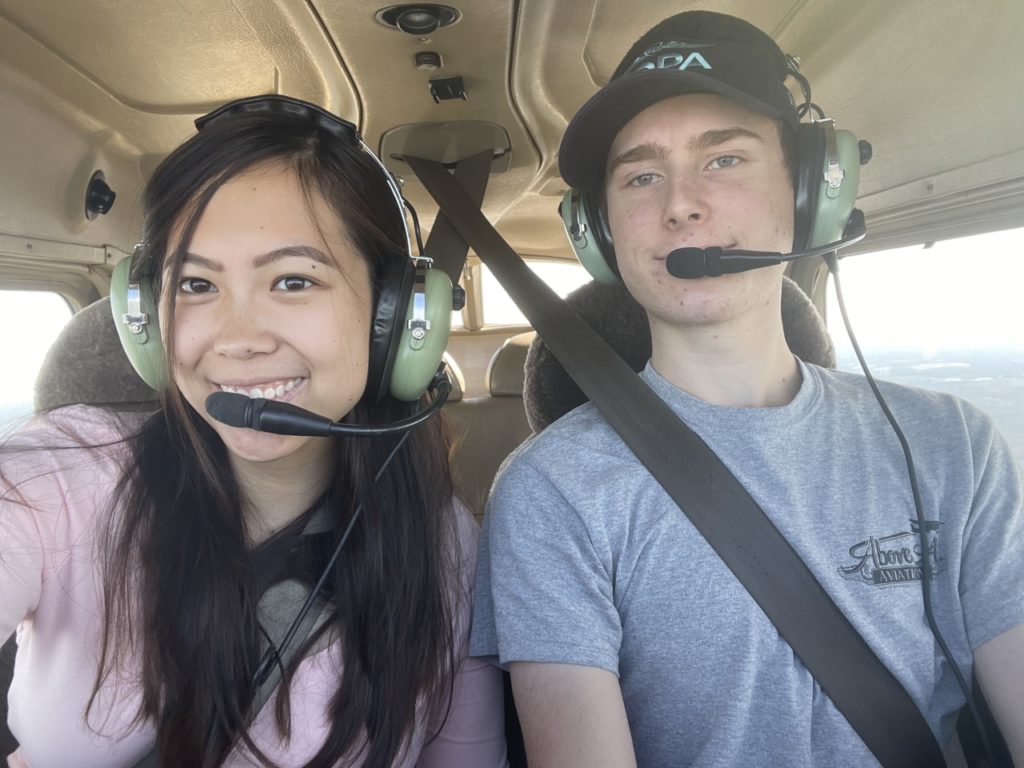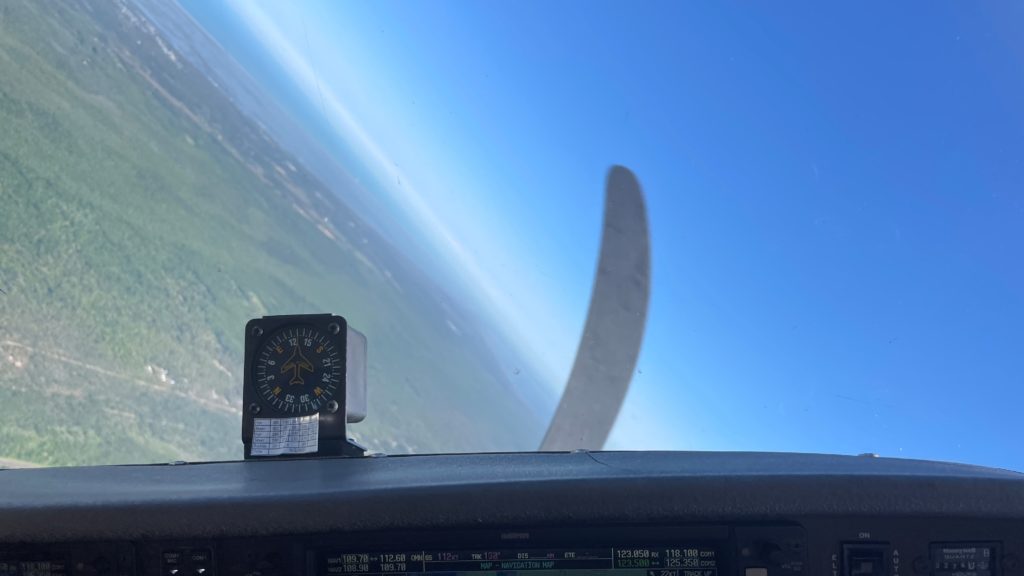We’re soarin’, flyin’…
So, on Sunday, March 20, I ended up going flying again, this time just with my friend Chris. The last time I’d stepped foot in a Cessna was in December, when I went flying with both Chris and our other friend Jack.
Chris has his commercial checkride coming up, and he wanted to practice for it. The commercial certificate is the third certificate that you work on at Embry-Riddle (after private and instrument). At ERAU, the private pilot certificate and instrument rating checkrides are done in-house or with an ERAU employee authorized by the Federal Aviation Administration (FAA). However, the commercial checkride is with a FAA representative.
I’d never gotten past private pilot lessons, so it was interesting seeing some of the differences. The commercial pilot certificate allows the holder to legally get paid for flying, while the private pilot certificate only allows the holder to fly. I’ve heard that doing commercial is similar to private, just a little harder- for example, the tolerances are smaller.
The flight was pretty fun. Before any sort of checkride, you practice and learn maneuvers to do with an instructor, and then demonstrate them on the checkride. Just because you don’t have the license doesn’t mean that you can’t do the maneuvers. Since Chris had already passed his private pilot’s license, he could legally take me flying- as long as I didn’t pay more than my pro-rata, or equal part cost of the flight.
Some of the commercial maneuvers that Chris did were similar to ones that I did in my brief period of flight training or have heard about. For example, we did steep turns at a 50 degree angle, where private pilots only needed to do them at a 45 degree angle.
I experienced a little bit of steep turns during my training, and I always thought that it was cool. During a steep turn, you feel twice the force of gravity- an increased load factor- and it’s kind of like being on a roller coaster. It’s a little scarier than being being on a roller coaster since you’re not attached to a track, but I trust my friends.
A few of the other maneuvers that were practiced were power on and power off stalls. I’d experienced these in private pilot training, and every time it happens, the stall warning horn goes off. It’s kind of an annoying sound, but it’s definitely necessary. In the real world, power on stalls are more likely to happen when the aircraft takes off, and power off stalls are more likely to happen when the aircraft lands.
I enjoyed the flight. We ended up in the south practice area, and since Florida is flat, we could see for miles. The last things that we did were practice takeoffs and landings- two very important parts of every flight.
We did a few touch-and-gos at the Massey airport, which is several miles south of Daytona. A touch-and-go landing is just what it sounds like- landing and taking off without coming to a full stop. (It’s also the name of one of ERAU’s Student Government Organization divisions!)
Once we were done, we headed back to Daytona to do a few more. Daytona Beach International has a lot more activity than the Massey airport does, including airlines. We ended up doing one touch-and-go on Runway 7R (not the large one- there was an American Airlines flight coming in that used that!) before finally landing on it. And that was it for the day.
It was a pretty cool experience. That’s one thing that I love about ERAU- there are pilots everywhere, and you’re likely to meet a friendly one who’s willing to take you up on a flight. ERAU also has the option for students to ride in the backseat of their aircraft if the student, instructor, and flight department all agree. That’s something I want to do- hopefully I’ll get to sit in the backseat of one of our multi-engine aircraft, the Diamond DA-42. I’ll see you in the next post… and hopefully at Riddle!





